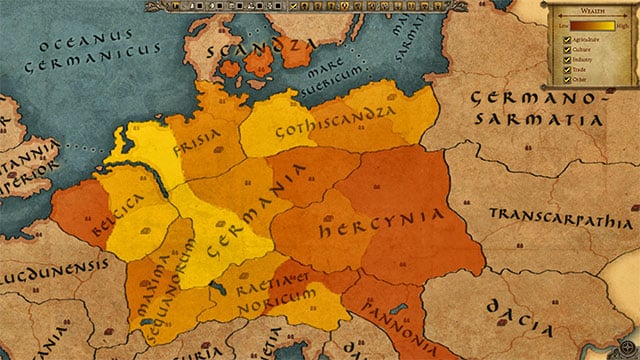Total War Attila: Provinces, regions and settlements

Map, on which the game is played, has been divided into provinces. One province consists of three regions - one large and two small. In each region there is one settlement, some roads, forests, swamps and other terrain obstacles. Settlement is the only place that can be attacked, conquered or improved. In the game there are no smaller villages, workshops and camps in a province. Everything is centered around they settlements or eventually around army, if its fraction is Horde.
Settlements are divided into smaller and larger cities. A small one has four places to place a building - one for a building from the settlement category and three for others - while the larger one has six slots. Thus, in each province you will find two small and one large city. Based on the size one predicts what buildings can be placed in the city. Both cities types have similar set of buildings in case of ports and commodities, but they differ in buildings available in the settlement category.
The difference between small and large cities is in scale. A village consumes 15 units of food, a city 35. Village gives +1 to public order, a city +3. A city gives faster growth of province that a village. In other words, a city costs more, but gives more profits. And it offers larger garrison, since a city is protected not only by soldiers, but by siege machines as well. However, most of buildings in cities and villages is the same, so it doesn't matter where you build them. Sanitation buildings are exception, as they improve sanitation in a settlement, not whole province.
You are not permitted to copy any image, text or info from this page. This site is not associated with and/or endorsed by the developers and the publishers. All logos and images are copyrighted by their respective owners.
Copyright © 2000 - 2025 Webedia Polska SA for gamepressure.com, unofficial game guides, walkthroughs, secrets, game tips, maps & strategies for top games.
